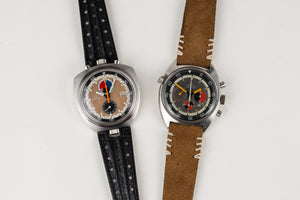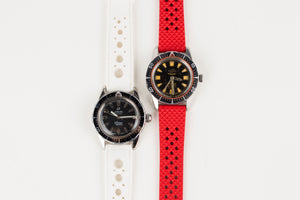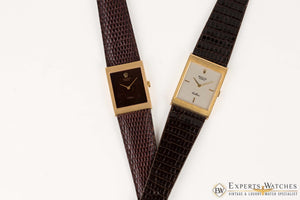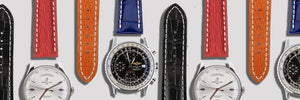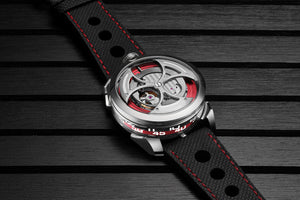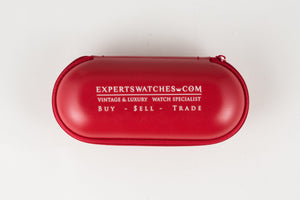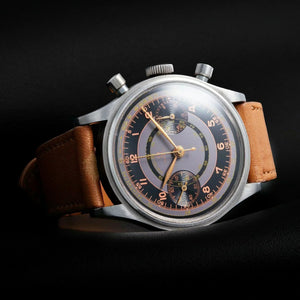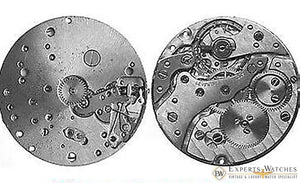History of Wristwatch
Jul 05, 2022
History of Wristwatch
From the start wristwatches were almost exclusively worn by women, while men used pocket watches up until the early 20th century. The concept of the wristwatch goes back to the 16th century production of earliest watches. It is believed by most that world's first wristwatch was created by Abraham-Louis Breguet for Queen Caroline Murat of Naples in 1810.
However, Elizabeth I of England received a wristwatch from Robert Dudley in 1571, described as an arm watch, 229 years earlier than the 1810 Abraham-Louis Breguet. By the mid nineteenth century, watchmakers were producing wristwatches as jewelry-based watch, often marketed as bracelets with time function which were made purely for women.
Wristwatches were first worn by military men towards the end of the nineteenth century, when the importance of synchronizing maneuvers during war was curtail part of warfare. To prevent potentially revealing the plan to the enemy through signaling was increasingly recognized. It was becoming clear that using pocket watches while in the heat of battle or while mounted on a horse was impractical. So officers began to strap the watches to their wrist, customized leather straps to house your pocket watch was created.

The Garstin Company of London patented a 'Watch Wristlet' design in 1893, although they were probably producing similar designs from the 1880s. Clearly, a market for men's wristwatches was coming into being at the time. Officers in the British Army began using wristwatches during colonial military campaigns in the 1880s, such as during the Anglo-Burma War of 1885.
These early models were essentially standard pocket watches fitted to a leather strap, but by the early 20th century, manufacturers began producing purpose-built wristwatches. The Swiss company, Dimier Frères & Cie patented a wristwatch design with the now standard wire lugs in 1903.
In 1904, Alberto Santos-Dumont, an early Brazilian aviator, asked his friend, a French watchmaker called Louis Cartier, to design a watch that could be useful during his flights. Cartier Santos is one of well know designs of today. Hans Wilsdorf moved to London in 1905 and set up his own business with his brother-in-law Alfred Davis. Wilsdorf & Davis, providing quality timepieces at affordable prices – the company later became Rolex which is well known and sought-after. Wilsdorf was an early convert to the wristwatch, and contracted the Swiss firm Aegler to produce a line of wristwatches. His Rolex wristwatch of 1910 became the first such watch to receive certification as a chronometer in Switzerland and it went on to win an award in 1914 from Kew Observatory in London.

The impact of the First World War dramatically shifted public perceptions on the propriety of the man's wristwatch and opened up a mass market in the post-war era. The creeping barrage artillery tactic, developed during the War, required precise synchronization between the artillery gunners and the infantry advancing behind the barrage. Service watches produced during the War were specially designed for the rigors of trench warfare and its functionality, with luminous dials and unbreakable glass. Wristwatches were also found to be needed in the air as much as on the ground: military pilots found them more convenient than pocket watches for the same reasons as Santos-Dumont had. The British War Department began issuing wristwatches to combatants from 1917 as a necessity.
A Cortébert wristwatch (1920s)
The company H. Williamson Ltd., based in Coventry, was one of the first to capitalize on this opportunity. During the company's 1916 AGM it was noted that "...the public is buying the practical things of life. Nobody can truthfully contend that the watch is a luxury. It is said that one soldier in every four wears a wristlet watch, and the other three mean to get one as soon as they can." By the end of the War, almost all enlisted men wore a wristwatch, and after they were demobilized, the fashion soon caught on – the British Horological Journal wrote in 1917 that "...the wristlet watch was little used by the sterner sex before the war, but now is seen on the wrist of nearly every man in uniform and of many men in civilian attire." By 1930, the ratio of wrist- to pocketwatches was 50 to 1. The first successful self-winding system was invented by John Harwood in 1923.

Basic Wristwatch timeline:
In 1916, at about the halfway point of the war, the New York Times published an article admitting that the wristwatch was more than just a passing fad and was, in fact, valuable and important. From then, the pocket watch began to fall out of fashion and the wristwatch grew into the standard means of time-keeping for both men and women alike.
1892: Swiss watch makers Omega introduce their first wristwatch, the world's first equipped with minute-repeating - a wearable clock with a chime.
1905: Wilsdorf & Davis, which would go on to become Rolex, is established in London, England. Their early wristwatches are sold to jewelers who would rebrand them under their own names.
1908: The Rolex brand is created by Hans Wilsdorf.
1913: Seiko creates the first Japanese wristwatch
1916: Patek Philippe introduces their first five-minute repeating complicated women's wristwatch.
1917: The British War Department begins standard issuing wristwatches to soldiers.
1923: John Harwood, a British watch repairman, patents the self-winding wristwatch.
1924: Patek Philippe creates their first minute-repeating men's watch for automotive engineer, Ralph Teetor, the man who invented cruise control.
1925: Patek Philippe invents the world's first known perpetual-calendar wristwatch.
1927: Rolex proves that their Oyster watches are waterproof by sending one across the English Channel on the wrist of swimmer Mercedes Gleitze. After 10 hours in the water, the watch still works perfectly.
1930: Wristwatches outnumber pocket watches at a 50:1 ratio
1931: Rolex introduces the world's first self-winding watch with a perpetual rotor. This technology still permeates the watch world today.
1932: Omega begins offering the world's first commercially available diver's watch.
1940: Omega industrializes advances in water-resistance, shock-proofing, and anti-magnetism.
1948: Patek Philippe begins researching possible electronic applications in watch making.
1953: Rolex launches their now-famous Submariner watch.
1957: Omega launches their Seamaster and SpeedMaster wristwatch lines. Casio Computer Co. is established, though their first watch will not hit the market until 1978.
1959: Seiko, in conjunction with their daughter-company Epson, begins developing the first ever electric quartz watch movement.
1961: the first wristwatch traveled to space on the wrist of Yuri Gagarin on Vostok 1.
1965: The Omega SpeedMaster becomes the official watch of NASA.
1969: Seiko begins mass producing their quartz movement electronic watch. Neil Armstrong is the first man to walk on the moon - he does so wearing an Omega SpeedMaster.
Please review more Company History.






